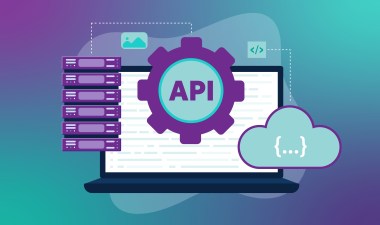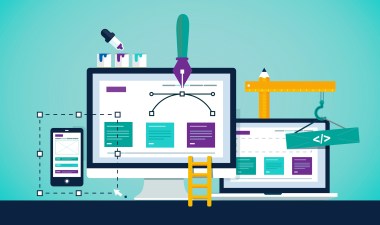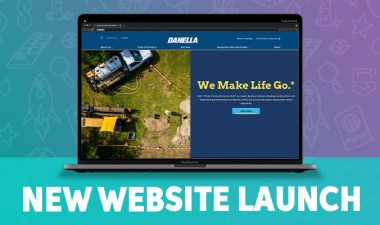What do autumn leaves and digital marketing agencies have in common?
No two are the same.
But unlike shades of red, orange, and yellow, the difference between one agency and the next isn’t always clear to the naked eye. And nowhere is this truer, or more high-stakes, than in an increasingly critical digital agency offering:
Web development.
The Three Faces of Dev
Think about the brands and products you lean on and love. There’s a good chance you’ve downloaded their smartphone app or visited their website – both carefully built by developers, who fall into three categories:
Front-end developers design the functional portions of an application that you see and engage with (buttons, menus, sliders, galleries, and more). Need a simple brochure website that reflects your B2B company, or a visually stunning online presence for a consumer-facing housewares brand? Front-end developers are key, and ideally have design experience that ensures an on-brand aesthetic.
Back-end developers are responsible for the behind-the-scenes (data storage, logic, and any mechanism needed to bring the front end to life). Need a database app that stores user information? A website with a product catalog and e-commerce? Back-end developers will be especially integral.
And last but not least, full stack developers are jacks of all trades who do both, working across front- and back-end efforts. Of course, like anyone adept at two things, a full stack developer is usually at least slightly more skilled at one over the other.
Which is how this all comes back to digital agencies. Which is how this all comes back to digital agencies.
Dev Deconstructed
Our Hammer Marketing team frequently hears from – and is hired by – businesses and brands who outsourced website or app design to another digital agency…only to discover the hard way that that agency didn’t have the development skills the project needed.
Specifically, we encounter mid-market companies who enlisted agencies that used drag-and drop tools, rather than custom code, to build their app and/or website. While drag-and-drop tools can be great for some applications, they generally lack the customization capability that mid-market companies need. Often the client company is unaware of this reality until they request a feature that their website or app cannot support – leaving them in a lurch. Their sobering options: carry on without the feature, or face the daunting expense of rebuilding their website or app from scratch.
Are you a mid-market company (or larger) looking to sidestep this dreaded impasse? It’s crucial that your business confirms that its agency’s development team is equipped to deliver everything you need (and might need) on your website or app, today and tomorrow. Looking at front-end development specifically, here are bare minimum best practices and tools to inquire about:
Sass and ES6+ – short for Syntactically Awesome Style Sheets, Sass is a CSS predecessor that infuses dev with time savings and visual consistency. It leads to cleaner code and has become the standard among modern developers. ES6+ (also known as ECMAScript) is the JavaScript equivalent, with similar benefits for productivity and maintainability.
Responsive Design – we debated including this one, because by 2024, it should be a given. However, we encounter the occasional site or app without it, compelling us to remind you: Be sure your developer uses responsive grids, media queries, and viewport meta tags, and all in all designs applications to adjust to the size and orientation of any user device, mobile or otherwise.
Webpack and Parcel – bundlers for web applications, these two popular tools both convert raw code into browser-ready optimized files. Regardless of which you use (they’re neck-in-neck in terms of market share, each with its loyalists), these bundlers have become part and parcel of today’s web development.
Accessibility – designing for all abilities has received increased focus in recent years, for a host of legal, ethical, and cultural reasons. Responsible and current developers weave accessibility audits into their workflow. Audits examine sites through the lens of Web Content Accessibility Guidelines 2.1 (WCAG), the international standard as outlined by the World Wide Web Consortium. Bonus: Google offers SEO benefits for sites that offer high usability across ability demographics!
Limitless Web and App Design
Want a web application designed in accord with today’s best practices – and capable of whatever your business might need down the road?
For mid-market companies, Hammer Marketing web development is always custom unless requested otherwise, purpose-built for growth, fluidity and your exact business goals and needs. When we do use off-the-shelf products, they’re chosen carefully, with your big picture in mind. Hammer Marketing also gives clients complete control to edit websites and apps as needed – and necessary training. It’s one of the reasons UpCity named Hammer a Best PA Marketing Agency, and why we’ve taken home a GDUSA digital design award!
Contact Hammer Marketing for a free consultation.

Must-Have Front-End Development Techniques
What do autumn leaves and digital marketing agencies have in common? No two are...

Boring by Design: Hammer Website Development
Digital marketing agencies like ours exist to help businesses stand out and get noticed....

A Handy Guide to APIs (and Why You Should Know at Least a Little About Them in 2024)
Coffee. Oxygen. Smartphone. If you guessed “Things you can’t live without,” congratulations! You’ve...

Driving Business Growth With Responsive Web Design: Why It Matters and How to Get There
What’s the big deal about responsive web design, anyway? Do users really care if...

Website Redesign Elevates a Construction Company’s Online Presence
Since its founding in 1972, construction services company Danella has successfully evolved to meet...

Five Attributes of Attractive, User-Friendly School Websites
Educational institutions need websites that are secure, flexible, robust, and attractive to users. Best-in-class...



